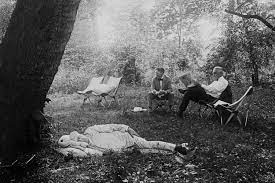Bret Stetka in Scientific American:
 Thomas Edison was famously opposed to sleeping. In an 1889 interview published in Scientific American, the ever energetic inventor of the lightbulb claimed he never slept more than four hours a night. Sleep was, he thought, a waste of time.
Thomas Edison was famously opposed to sleeping. In an 1889 interview published in Scientific American, the ever energetic inventor of the lightbulb claimed he never slept more than four hours a night. Sleep was, he thought, a waste of time.
Yet Edison may have relied on slumber to spur his creativity. The inventor is said to have napped while holding a ball in each hand, presuming that, as he fell asleep, the orbs would fall to the floor and wake him. This way he could remember the sorts of thoughts that come to us as we are nodding off, which we often do not recall. Sleep researchers now suggest that Edison might have been on to something. A study published recently in Science Advances reports that we have a brief period of creativity and insight in the semilucid state that occurs just as we begin to drift into sleep, a sleep phase called N1, or nonrapid-eye-movement sleep stage 1. The findings imply that if we can harness that liminal haze between sleep and wakefulness—known as a hypnagogic state—we might recall our bright ideas more easily.
More here.
